15/2/1929 - 29/11/1975
Record updated 15-Feb-07
Charismatic and charming, Graham HIll was almost universaly popular with the public. He had a quick wit and was a natural entertainer. He won two World Chamionships, in 1962 for BRM and in 1968 for Lotus. His love of the sport caused him to race on past his best but he retired in 1975 to concentrate on running his team and developing the natural tallent of Tony Brise. Sadly he was killed along with Brise and three other team members when his plane crashed in thick fog on a golf course in north London.

Norman Graham Hill was born in north London on February 15, 1929 and grew up with the deprivation and danger of life during the Blitz in wartime London. He went to a technical school and at 16 became an apprentice for the Smiths Instruments.
He owned a motorcycle and crashed into a parked car one foggy night and broke his pelvis resulting in left leg being shorter than his right.
He served his five-year apprenticeship with Smiths before being called into the Navy at the age of 21. He resentfully completed his National Service and it was at this time that he cultivated the neatly trimmed moustache that would become his trademark.
Hill then returned to Smiths. In 1952 he took up rowing joining the London Rowing Club, whose colours he later adopted for his helmet design (eight white vertical stripes representing oars on a dark blue background), and met his future wife, Bette, who he married in 1955.
In 1953 he drove four laps, at five shillings a lap, around Brands Hatch in an 500cc F3 car owned by a drivig school. Pre-decimalisation there were 20 shillings in a pound, so Hills four laps cost a pound. He was hoked but his desire to race had two problems to overcome, first he didn't have a driving licence and second he didn't have any money. He bought an old 1934 Morris and got his lcence. He then left Smiths and collected his unemployment benefit and volunteered to help the driving school, the Universal Motor Club. He also spend much of his spare time at Steering Wheel Club in London, the hang out of many a racing driver, despite never being a member.
He talked his way into a job as a mechanic and general assistant for Don Parker, the most successful 500cc driver of all time. And, through Don, he was able to make his race debut at Brands Hatch in a 500cc F3 Cooper MkV.
After a race at Brands Hatch, he scrounged a ride back to London with Colin Chapman and Mike Costin, each of them assuming that he was a friend of the other, and talked his way into a part time job as a mechanic with the emergent Lotus team. Hill soon became one of the first full time Lotus employees.
By the end of 1955 he still had competed in just four races but in 1956 he built a bright yellow sports Lotus 11 with parts lent to him by Colin Chapman who not only retained ownership of the car but also was to receive any start and prize money. In his first full season he almost won the Autosport Championship.
In 1957 he raced a variety of cars including various Lotus, a Tojeiro-Jaguar and a Formula 2 Cooper and, when Team Lotus made the move to Formula One in 1958, Hill became a Grand Prix driver, debuting at the Monaco Grand Prix in a Lotus 12, one of the last front-engined Formula 1 cars. In the race he failed to finish when a wheel came off. He also made his debut at Le Mans that year sharing a Lotus 15 with Cliff Allison. However they lasted just three laps, all driven by Allison.
However the early Lotus F1 cars was both slow and unreliable and after another uncompetetive year in 1959, Hill switched to BRM for 1960.
In 1960 British Racing Motor were also uncompetetive, but Hill's drive and motivation brought the team back to the top. His first race was in Argentina in the old front-engined Type 25, but by the time the European season opened he had the new rear-engined Type 48 at his disposal. In his second Championship race in the new car, the Dutch Grand Prix, he scored his first podium finish. Then at the British Grand Prix after stalling at the start, he carved his way through the field to take the lead by lap 55. However having caught and passed Jack Brabham, his charge had taken it's toll on the car. With his brakes fading he spun off at Copse. As he walked disconsolately back to the pits he was cheered by assembled crowd, instantly becoming a hero. He also drove for Porsche that year in Formula 2 and sports cars, taking third overall and a class win in the Buenos Aires 1000 Km with Jo Bonnier.
1961 was disastrous but in 1962 he won the opening round in Holland. Then after missing out on almost certain wins at Monaco and inthe French Grand Prix, he took wins in Germany and Italy. After a season long battle with Jim Clark in the Lotus 25, it all came down to the last race of the season, the South Africa Grand Prix. Clark needed to win but after building up a good lead, mechanical problem put him out leaving Hill to take the race and the World Championship.
Between 1963 and 1965 he scored a hat-trick of wins at both the Monaco and United States Grands Prix and in 1964 he missed out on the title by just one point when at the final race of the Championship in Mexico City, Lorenzo Bandini slowed down on the last lap to let Surtees through into second place and the title.
As was common at the time, Hill also raced in other categories and on non-Grand Prix weekends he could often be found driving in GT and Saloon Car races. He gave the E-type Jaguar a winning debut in its first race at Oulton Park in April 1961, driving for Tommy Sopwith's Equipe Endeavour, and took a string of wins and podium places through 1962 and 1963 in John Coombs' E-type. Driving Ferrari sports and GT cars for Maranello Concessionaires partnered by Jo Bonnier, he won the 1963 and 1964 Tourist Trophy races and the 1964 Reims 12 Hours and Paris 1000 Km, as well as finishing second at Le Mans that year.
In 1963 he drove the 4WD Ferguson P99 in Australia and New Zealand, finishing second in the rain at Lakeside before retiring in the New Zealand GP less than a mile from the finish. In 1964 driving for Scuderia Veloce he won the South Pacific Trophy at Longford in a Brabham BT4-Climax and in 1965 he won the New Zealand GP in a BT11A. In 1966 he took wins in the two major Tasman Series races for BRM, taking the New Zealand Grand Prix again and the Australian Grand Prix as well.
Hill was also part of the British invasion of the Indianapolis 500. He had tested one of Mickey Thompson's Specials in 1963 but flew home before the race. He returned in 1966 to drive the Red Ball Lola-Ford. In a race of attricion that saw 11 cars eliminated at the start, Hill took the win, though some feld that it should have been Clark, it was none the less Hill who was sipping milk in victory lane.
Graham Hill had become a media hero whose antics away from the track gained huge notoriety. Attending sports car racer Cliff Davis' infamous 'Filth Nights', he flirted, danced on table tops and performed striptease acts. He also bought a plane which he flew with a fair degree of abandon as 'Hillarious Airways.'
As BRM fell back, Hill decided to re-join Lotus. So in 1967 he became team mate to Jim Clark. Then, early in 1968, Clark was killed and this was followed by the death of Mike Spence at Indianapolis. The Lotus team was devastated but Hill picked the team up and won in Spain, Monaco, and Mexico, to secure his second World Championship.
In 1969 he won Monaco for a fifth time, but a huge accident in the last race of the season, the US Grand Prix nearly ended his career. He had spun and stalled his four-wheel drive Lotus 63 and after getting out to push start it he failed to re-fasten his seat belts. A few laps later a puncture put the Lotus into a bank and Hill was thrown out, breaking both legs. However his inability to do up his belts could have been a blessing as had he stayed in the car his injuries migh well have been fatal. He returned to race on March 7th 1970, just five months later, at the South African Grand Prix at Kyalami with Rob Walker's Lotus 49 finishing sixth and taking a Championship point.
The rest of the season was dissapointing and at the end of the year, Walker combined his operation with Team Surtees and Hill moved on to Brabham where he spent two seasons with little to show by way of results. His last win in Formula One was in the non-Championship International Trophy at Silverstone in 1971 with the "lobster claw" Brabham BT34.
In 1972 he won the 24 Hour race at Le Mans with Henri Pescarolo driving a Matra MS670. This victory completed the Triple Crown of motorsport: winning the Indy 500, F1 World Championship, and the Le Mans 24 Hours. Hill is still the only person ever to have accomplished this.
In 1973 he set up his own Formula One team becoming the first customer of a new manufacturer called Shadow. With backing from Embassy cigarettes it was a poor season and he failed to score a World Championship point for the first time since 1959.
Embassy Hill Racing switched to a Lola T370 for 1974, which though reliable, was slow. He did score one point for a sixth place in Sweden.
He officially became a constructor in 1975 with the Hill GH1 but after failing to qualify for the Monaco Grand Prix, Hill announced he was retiring as a driver but would continue to run the team led by the highly talented, Tony Brise.
Hill and Bette had two daughters, Brigitte and Samantha, and a son, Damon who later became Formula One World Champion, the only son of a former champion to do so. Damon used the same helmet design as his father.
In November 1975, Graham was killed when he crashed his Piper Aztec aeroplane when he clipped a row of trees in foggy conditions on the Arkley Golf Course in North London. He was flying Embassy Hill team manager Ray Brimble, driver Tony Brise and two mechanics from France where they had been testing at Paul Ricard to attend a party in London.
As Hill was uninsured, his wife was prosecuted by the families of the other victims. Settling the claims wiped out most of Hill's estate.
Hill took part in 176 Grands Prix, scored 14 victories and won two World Championships. He had become an institution and someone who epitomised motor racing to the man in the street. Full of energy, Hill had a wonderful sence of humor and appeared on television with the British comic duo Eric Morecambe and Ernie Wise and was a perenial favorite exchanging banter with Jackie Stewart on the BBC Sports Personality of the Year Show.
Three thousand people attended Graham Hill's funeral in St Alban's, Hertfordshire, on 5 December.
hr
POPULAR DRIVERS FROM GB
TVG Selby
Anthony Davidson
Godon Spice
Ken Kavanagh
Geoff Crossley
Adrian Newey
Mortimer Morris-Goodall
Dick Gibson
Brian Gubby
Alfred Bottoms

Graham Hill BRM Goodwood Chicane Photograph © Roger Lane

Graham Hill and Jackie Stewart, Thruxton F2 Photograph © Roger Lane
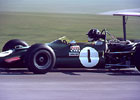
Graham Hill, Formula 2 Lotus, Thruxton. Photograph © Roger Lane

Graham Hill, Gold Leaf Team Lotus F1, Silverstone. Photograph © Roger Lane

Graham Hill - in the pits. Photograph © Roger Lane

Graham Hill Silverstone 1969. Photograph © Roger Lane

Graham Hill in the pits with the Gold Leaf Team Lotus. Photograph © Roger Lane
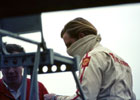
Graham Hill Silverstone 1969. Photograph © Roger Lane

Betty Hill checks lap times for husband Graham. Photograph © Roger Lane

Graham Hill chats with Colin Chapman Silverstone 1969. Photograph © Roger Lane
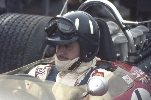
Graham Hill Gold Leaf Team Lotus.

Fuji, 1966. Graham Hill (24) and Jackie Stewart (43) flank Lloyd Ruby (29) at the start. (Johnson)
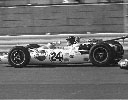
Fuji, 1966. Graham Hill. (Johnson)

George Bignotti, Graham Hill. (Johnson)

Graham Hill Silverstone 1968. Photograph © Roger Lane

Testing, March 1963. Graham Hill in M/T's new car. (Johnson)

Testing, March 1963. G. Hill in M/T's rig. (Johnson)

Graham Hill gets ready for a test run, 1963. (Johnson)

Even the greats get a taste of Indy's walls. Graham Hill crashed during practice, 1963. (Johnson)

Graham Hill BRM Goodwood 1964. Photograph © Roger Lane
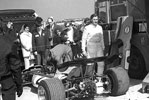
Graham Hill with the Rondel Racing team Brabham BT36 - Cosworth FVA.

Graham Hill with the Rondel Racing team Brabham BT36 - Cosworth FVA

Graham Hill with the Rondel Racing team.
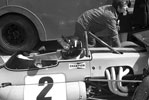
Graham Hill in a Brabham BT36 Cosworth FVA being pushed out of the paddock before the race.

Graham Hill's and Tim Schenken's Brabham BT36 Cosworth FVAs before the race
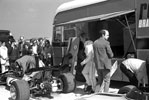
Graham Hill with the Rondel Racing team,. Before the race.
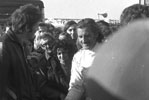
Graham Hill after winning the final of the Jochen Rindt Memorial Trophy.